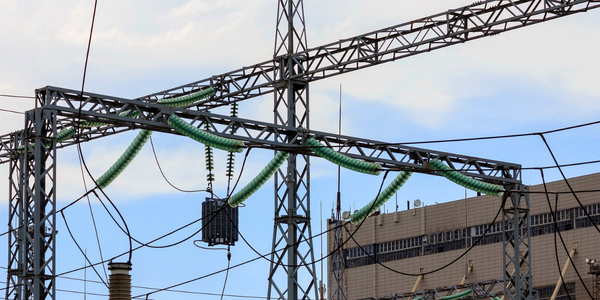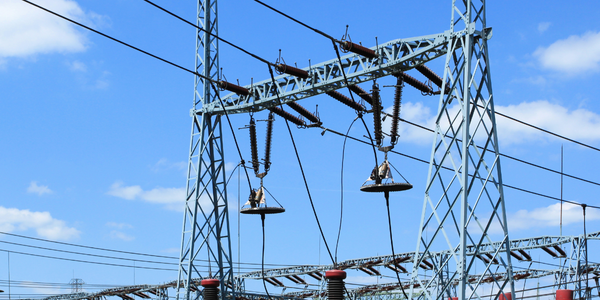Technology Category
- Analytics & Modeling - Real Time Analytics
- Infrastructure as a Service (IaaS) - Cloud Databases
Applicable Industries
- Cement
- Electrical Grids
Applicable Functions
- Maintenance
- Procurement
Use Cases
- Real-Time Location System (RTLS)
- Track & Trace of Assets
Services
- Cloud Planning, Design & Implementation Services
About The Customer
Rumble is an Israeli company that is building applications to encourage and inspire people to maintain healthy daily habits. Their application converts the user’s steps into reward coins, which can be used to make purchases at hundreds of shops and websites. Rumble's users are goal-oriented and being able to instantaneously see their steps and purchase coupons from companies because of their healthy habits encourages them to maintain their active lifestyles. Rumble has a high engagement with their users and maintaining the platform performance is vital. They started with around 400,000 users and have since more than tripled their user base through partnerships with Clalit Health Services and Histadrut-General Federation of Labor in Israel.
The Challenge
Rumble, an Israeli company, developed an application that converts user's steps into reward coins, which can be used to purchase unique products or services. The company initially used PostgreSQL to handle data comprising users’ step counts, with three different tables tracking daily, weekly, and monthly steps. However, as user growth started to increase, PostgreSQL performance began declining, especially during peak times. The application's responsiveness declined with around 20+ requests per second, as PostgreSQL was unable to maintain the latency required to serve the leaderboards and eventually ran out of CPU and memory. Rumble's users are goal-oriented and being able to instantaneously see their steps and purchase coupons encourages them to maintain their active lifestyles. Therefore, Rumble needed to deliver real-time, data-driven applications to meet those needs. They needed a database that could handle complex queries, scale easily as their number of users grew, handle high concurrency, maintain low-latency queries, and require low ops.
The Solution
Rumble evaluated other technical solutions including Imply Cloud and Snowflake, but these solutions had drawbacks centered around ops, cost, and latency. They then came across Rockset, which was able to meet Rumble’s real-time analytical needs. Within 30 minutes of creating an account, Rumble was able to power their leaderboards in real-time using the Write API to write data into Rockset. Rockset supports ANSI SQL with JOINs, aggregations, ordering and grouping on any field in your documents. To return queries within milliseconds, Rockset uses its Converged Index™, which indexes each field through an inverted index, row index, and column index. This allows for queries to be executed in the most efficient manner. Rumble was able to integrate Rockset into their product and as they continue to grow and expand, they will rely on Rockset to seamlessly scale with them while maintaining the high performance their applications require.
Operational Impact
Quantitative Benefit

Case Study missing?
Start adding your own!
Register with your work email and create a new case study profile for your business.
Related Case Studies.

Case Study
System 800xA at Indian Cement Plants
Chettinad Cement recognized that further efficiencies could be achieved in its cement manufacturing process. It looked to investing in comprehensive operational and control technologies to manage and derive productivity and energy efficiency gains from the assets on Line 2, their second plant in India.

Case Study
Hydro One Leads the Way In Smart Meter Development
In 2010, Ontario’s energy board mandated that time-of-use (TOU) pricing for consumers be available for all consumers on a regulated price plan. To meet this requirement, Hydro One needed to quickly deploy a smart meter and intelligent communications network solution to meet the provincial government’s requirement at a low cost. The network needed to cover Hydro One’s expansive service territory, which has a land mass twice the size of Texas, and its customers live in a mix of urban, rural, and remote areas, some places only accessible by air, rail, boat or snowmobile. Most importantly, the network needed to enable future enterprise-wide business efficiencies, modernization of distribution infrastructure and enhanced customer service. To meet these needs, Hydro One conceptualized an end-to-end solution leveraging open standards and Internet Protocols (IP) at all communication levels. The utility drew upon industry leaders like Trilliant to realize this vision.

Case Study
Selling more with Whirlpool
Whirlpool wanted to add connectivity to appliances and transform the company's relationship with customers. Traditionally, Whirlpool interaction with customers was limited to purchases made once every ten years. Connected washer and dryers provide exciting new features like remote management of start times and inter-machine communication.

Case Study
SAS® Analytics for IoT: Smart Grid
Companies face falling revenues, rising infrastructure costs, and increasing risk of outages caused by inconsistent energy production from renewable sources. Less money is coming in as more people and organizations take steps to curb their energy use. Utilities are paying more to maintain and build infrastructure due to increasing complexity, resulting from the rising number of intermittent and variable renewable energy sources connected in the distribution grid.

Case Study
Enel Secures Italian Power Generation Network
Electric energy operators around the world are working to increase the reliability and cyber resiliency of their systems. This includes Enel, a global power company that manages and monitors the Italian power grid. This grid:• Serves 31 million customers• Has a net installed energy capacity exceeding 31 gigawatts• Includes more than 500 power generation plants,including hydroelectric, thermoelectric, and wind• Is managed and monitored by Enel 24/7/365• Is operated by Terna, the Italian Transmission System Operator (TSO)Enel is responsible for the availability of the grid’s underlying ICS and industrial network. It also manages Regional Control Centers and Interconnection Centers which connect with the TSO. The TSO manages the flow of energy to the grid plus controls and remotely regulates the power generation of power plants, increasing and decreasing power production as required. The complex system of interaction and cooperation between Enel and the TSO has strong security implications as well as operational and business challenges.

Case Study
IoT based Energy Quality Availability Monitoring Solution
There were several challenges faced:Since this data would be in the public domain, accuracy and authenticity of this data were of paramount importance. It should be able to withstand scrutiny.It is challenging to build an appliance that can withstand a wide range of voltage fluctuations from as low at 90v to as high as 320v. Since the device would be installed in remote locations, its resilience was of paramount importance.The device would have to deal with poor network coverage and have the ability to store and re-transmit data if networks were not available, which is often the case in rural India. The device could store up to 30 days of data.The platform that deals with the data should be readily available and highly reliable and never lose a packet of data.



